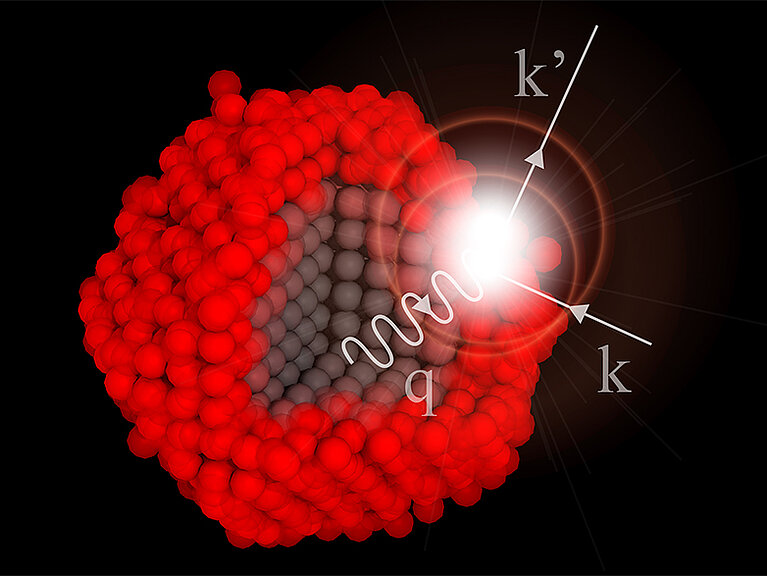March 09, 2016 - by ETH Zurich
All materials are made up of atoms, which vibrate. These vibrations, or "phonons", are responsible, for example, for how electric charge and heat is transported in materials. Vibrations of metals, semiconductors, and insulators in are well studied; however, now materials are being nanosized to bring better performance to applications such as displays, sensors, batteries, and catalytic membranes. What happens to vibrations when a material is nanosized has until now not been understood.
Soft Surfaces Vibrate Strongly
In a recent publication in Nature, ETH Professor Vanessa Wood and her colleagues explain what happens to atomic vibrations when materials are nanosized and how this knowledge can be used to systematically engineer nanomaterials for different applications.
The paper shows that when materials are made smaller than about 10 to 20 nanometers - that is, 5,000 times thinner than a human air – the vibrations of the outermost atomic layers on surface of the nanoparticle are large and play an important role in how this material behaves.
“For some applications, like catalysis, thermoelectrics, or superconductivity, these large vibrations may be good, but for other applications like LEDs or solar cells, these vibrations are undesirable,” explains Wood.
Indeed, the paper explains why nanoparticle-based solar cells have until now not met their full promise. The researchers showed using both experiment and theory that surface vibrations interact with electrons to reduce the photocurrent in solar cells.
“Now that we have proven that surface vibrations are important, we can systematically design materials to suppress or enhance these vibrations,” say Wood.
Improving Solar Cells
Wood’s research group has worked for a long time on a particular type of nanomaterial – colloidal nanocrystals – semiconductors with a diameter of 2 to 10 nanometers.
These materials are interesting because their optical and electrical properties are dependent on their size, which can be easily changed during their synthesis. These materials are now used commercially as red- and green-light emitters in LED-based TVs and are being explored as possible materials for low cost, solution-processed solar cells. Researchers have noticed that placing certain atoms around the surface of the nanocrystal can improve the performance of solar cells. The reason why this worked had not been understood. The work published in the Nature paper now gives the answer: a hard shell of atoms can suppress the vibrations and their interaction with electrons. This means a higher photocurrent and a higher efficiency solar cell.
Big Science to Study the Nanoscale
Experiments were conducted in Professor Wood’s labs at ETH Zurich and at the Swiss Spallation Neutron Source at the Paul Scherrer Institute. By observing how neutrons scatter off atoms in a material, it is possible to quantify how atoms in a material vibrate. To understand the neutron measurements, simulations of the atomic vibrations were run at the Swiss National Supercomputing Center (CSCS) in Lugano. Wood says, “without access to these large facilities, this work would not have been possible. We are incredibly fortunate here in Switzerland to have these world class facilities.”
This article was published first in ETH News »
Reference
- Bozyigit D et al. Soft surfaces of nanomaterials enable strong phonon interactions. Nature, Advanced Online Publication, 09 March 2016. DOI: 10.1038/nature16977
- Bozyigit D, Volk S, Yarema O, Wood V. Quantification of Deep Traps in Nanocrystal Solids, their Electronic Properties, and their Influence on Device Behavior. Nano Letters, 2013, 13 (11), pp 5284–5288. DOI: 10.1021/nl402803h
- Bozyigit D, Lin W, Yazdani N, Yarema O, Wood V. A Quantitative Model for Charge Transport, Trapping, and Recombination in Nanocrystal Solids. Nature Communications 6, Article number:6180 DOI: 10.1038/ncomms7180
